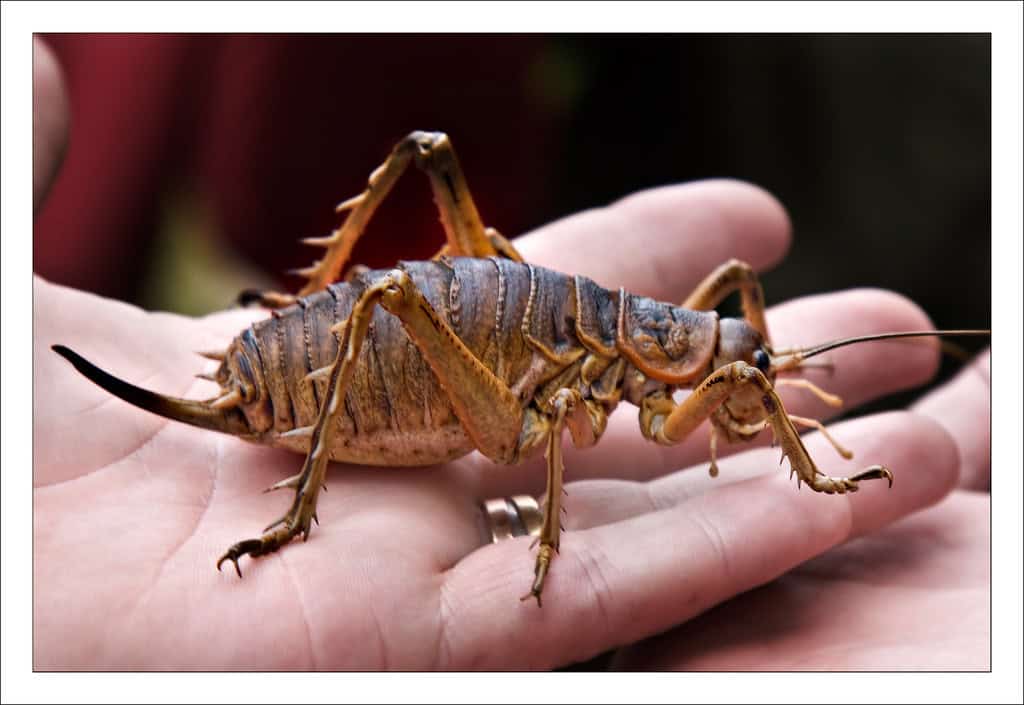The giant weta, native to New Zealand, is a captivating insect that defies conventional perceptions of most bugs. This remarkable creature, known for its impressive size and weight, often sparks the curiosity of entomologists and nature enthusiasts alike. While insects are typically small and lightweight, the giant weta breaks the mold with its extraordinary dimensions, in some cases rivaling the size of small birds. Understanding the giant weta offers an intriguing glimpse into the adaptability and diversity of the insect world.
Physical Characteristics
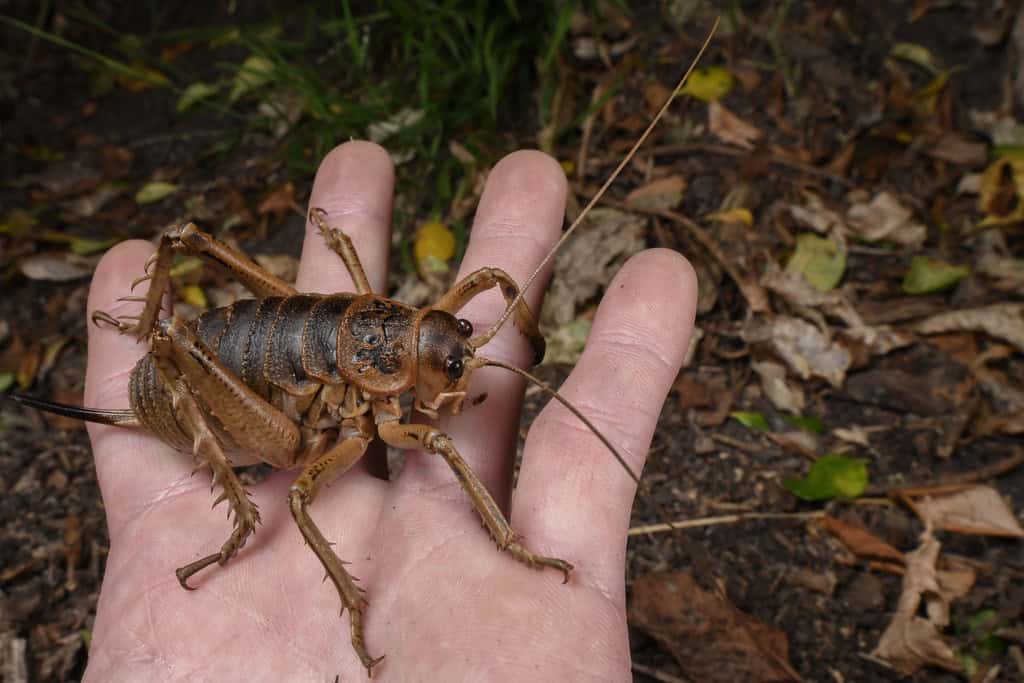
Giant wetas belong to the Anostostomatidae family and are often referred to as “nature’s tank” due to their robust and hefty build. There are several species of giant weta, with the largest being the Little Barrier Island weta, or Deinacrida heteracantha. These insects can reach lengths of up to 10 centimeters (approximately 4 inches) and can weigh as much as 70 grams (about 2.5 ounces), making them one of the heaviest insects on the planet.
Their bodies are characterized by a hard exoskeleton, long antennae, and powerful hind legs equipped with spines that aid in defense and movement. The coloration of giant wetas ranges from light brown to a deep, earthy hue, allowing them to blend seamlessly into their natural habitats. Despite their intimidating size and appearance, giant wetas are primarily herbivorous, feeding on leaves, fruits, and flowers.
Habitat and Distribution
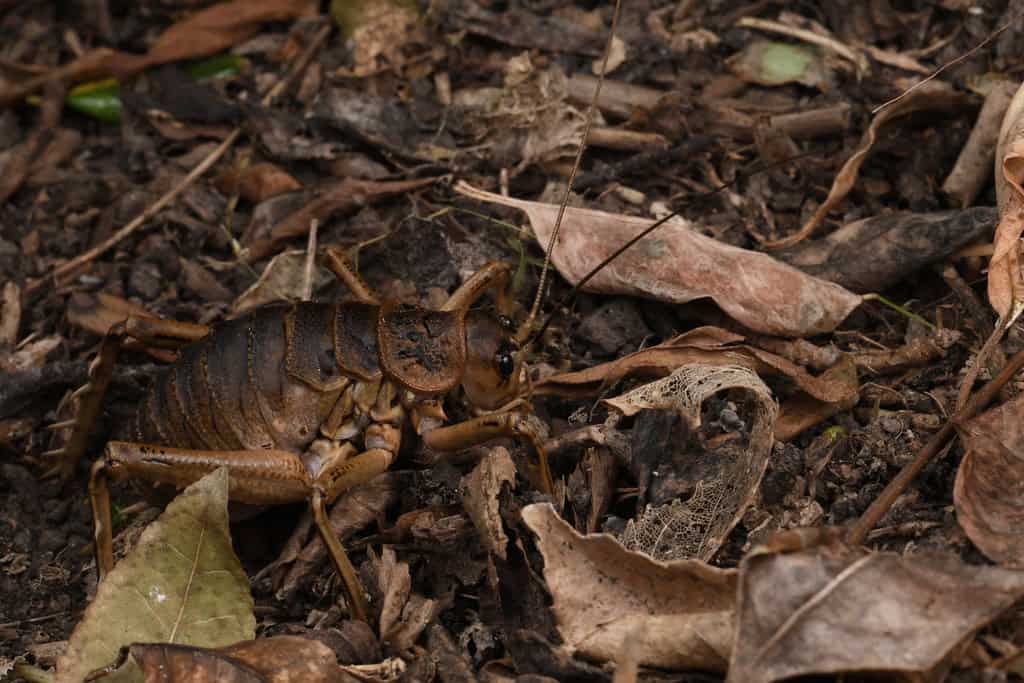
Giant wetas are endemic to New Zealand, where they inhabit diverse environments varying from coastal forests and scrublands to grasslands and caves. Their current distribution is largely restricted to offshore islands, which play a crucial role in their conservation. These locations provide a refuge from the introduced predators and habitat destruction that have significantly impacted their mainland populations over the years.
It is on these secluded islands that giant wetas find an environment where they can thrive, away from threats such as rats and other invasive species. Conservation efforts continue to prioritize protecting and restoring these habitats to ensure the survival of the giant weta and other unique New Zealand fauna.
Behavior and Ecology
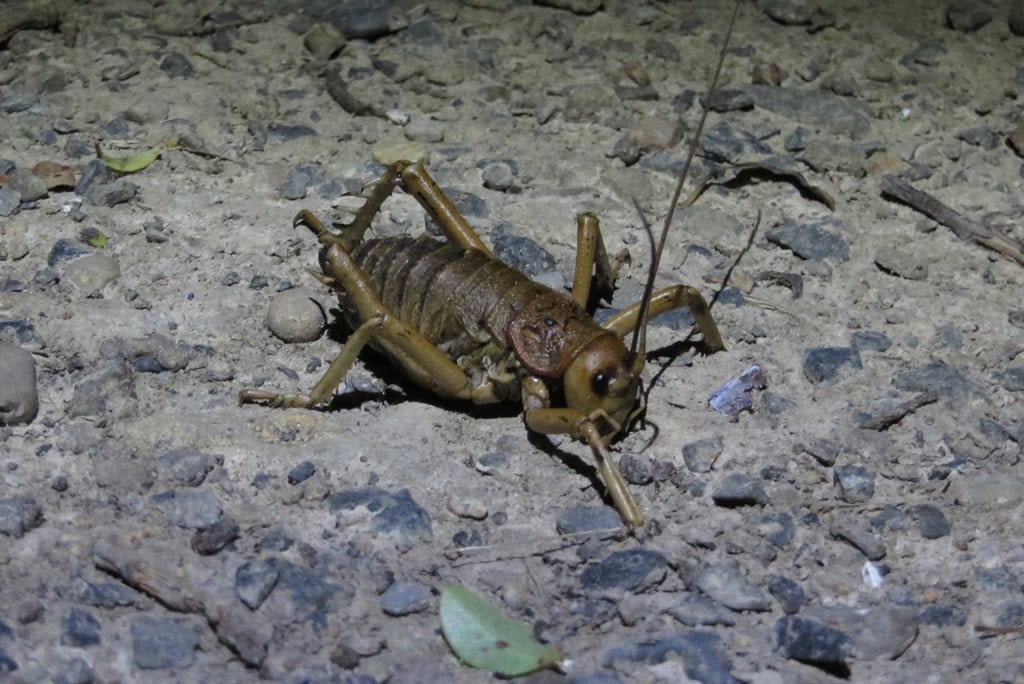
Despite their formidable appearance, giant wetas are relatively docile creatures with nocturnal habits. During the day, they seek shelter in burrows or beneath logs and stones, becoming active as night falls. Their powerful legs not only assist in locomotion but also serve as a defensive mechanism against predators. When threatened, a giant weta may raise its legs and produce a hissing sound, designed to dissuade potential threats.
Their ecological role as herbivores positions them as important contributors to their ecosystems. By consuming plant material, they aid in seed dispersal and contribute to the cycling of nutrients within their environment. This interaction highlights their significance beyond mere survival, underscoring their contribution to the health and balance of their habitats.
Conservation Status
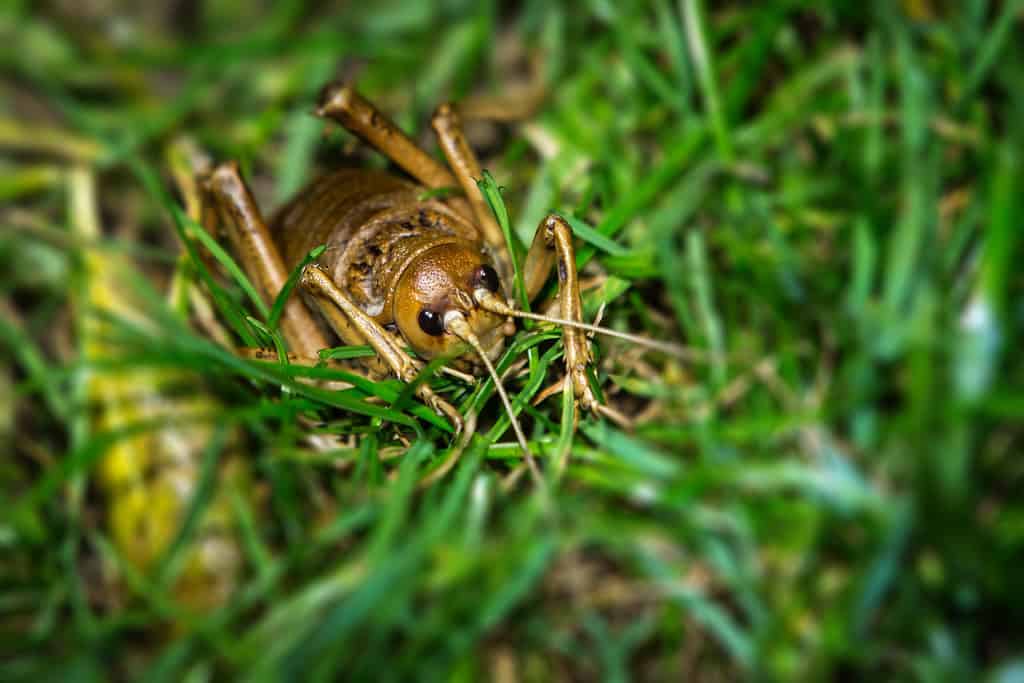
The conservation status of giant wetas is a matter of concern due to their vulnerability to habitat loss and introduced predators. Some species are classified as endangered, necessitating concerted conservation efforts to mitigate these threats. Initiatives focusing on habitat restoration, predator control, and breeding programs are essential in safeguarding their future.
The involvement of local communities and awareness programs has also been pivotal in fostering a collective responsibility for the conservation of these extraordinary insects. Through education and proactive measures, there is hope for sustaining giant weta populations and preserving their niche in New Zealand’s rich biodiversity.
Conclusion
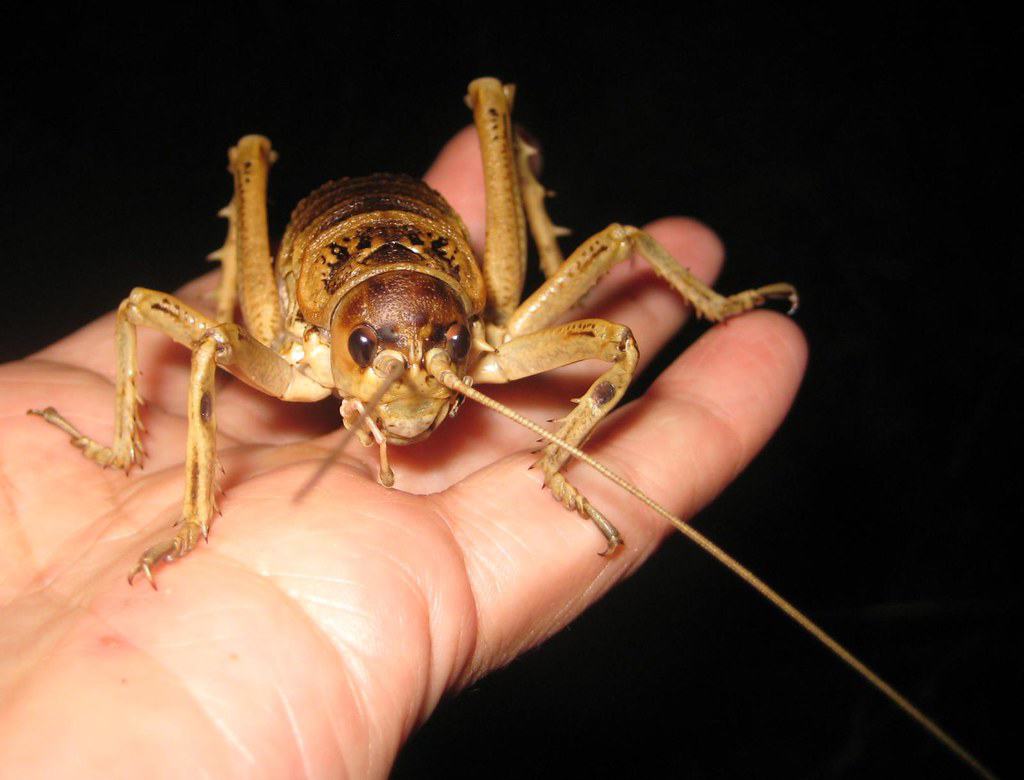
The giant weta stands as a testament to the awe-inspiring diversity of the insect kingdom, challenging preconceived notions about what insects embody. By defying size expectations and thriving within specialized environments, giant wetas capture the imagination and remind us of the delicate balance within ecosystems. As conservation efforts continue to unfold, there is optimism for preserving these fascinating giants, ensuring that future generations can marvel at their unique grandeur.
- 10 Most Endangered Birds in the U.S. and Where to Find Them - August 9, 2025
- 15 Tips for Managing Spider Infestations During Storm Season - August 8, 2025
- How Superstorms Have Reshaped Coastlines Over Time - August 8, 2025

